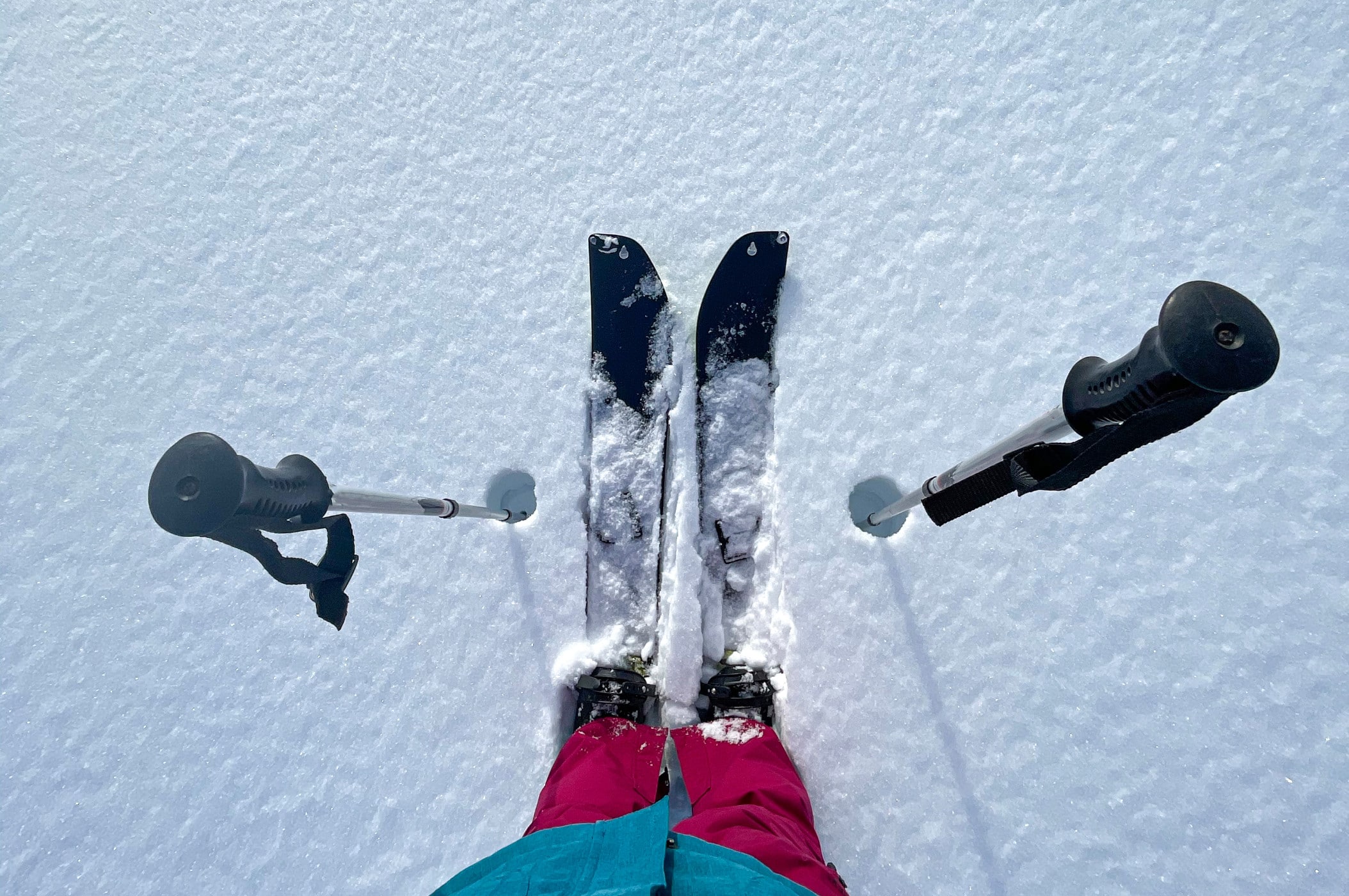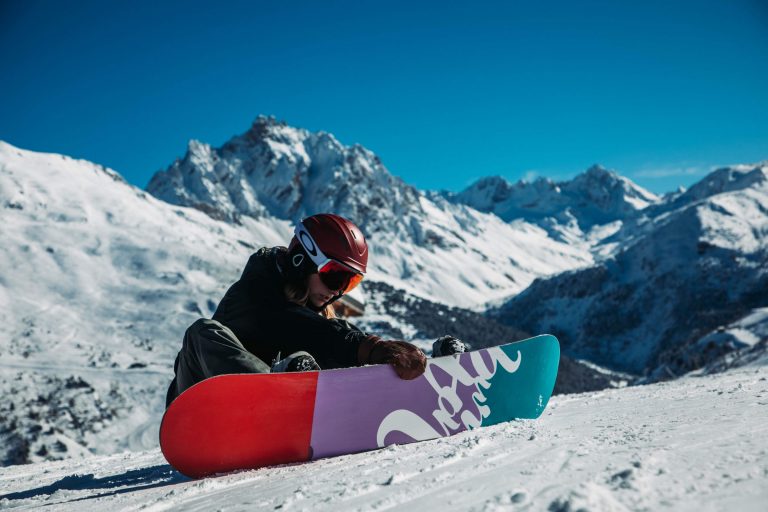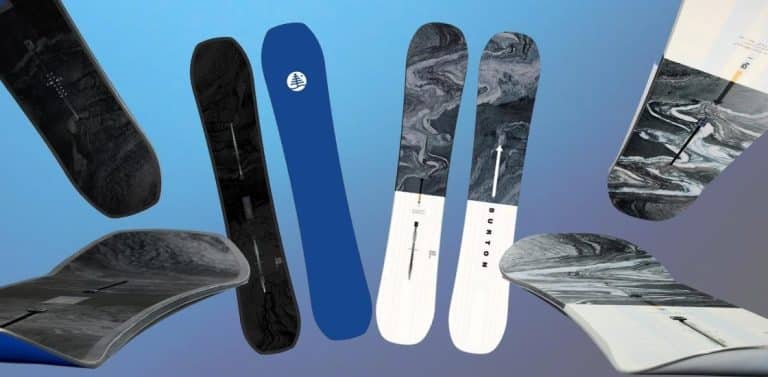Along with bindings and the board itself, snowboard boots are one of the key pieces of gear you need to practice the beautiful sport of snowboarding. To perform at your best, your equipment needs to fit properly.
This article will dive into the topic of snowboard boot sizing and give you the knowledge you need to find the perfect boot to fit your body and your riding style.
Understanding Snowboard Boot Sizing
When it comes to choosing snowboard boot size, it’s important to remember two things:
- Your boot size might NOT be the same as your shoe size.
- Not all brands follow the same sizing system.
Because of the second of these two points, a system was developed which relates boot size to foot length: Mondo sizing.
Another thing to bear in mind are the slight differences in boot construction between men’s, women’s, and kid’s snowboard boots.
Men’s snowboard boots will generally be a bit stiffer and heavier than women’s or kid’s boots. The reason is due to men generally having more muscle mass to push into boots, meaning they need to be a bit stiffer to resist the weight.
Kid’s boots will be even lighter and softer than women’s boots for the same reasons as above.
What is Mondo sizing for snowboard boots?
Mondo sizing is the measurement of the foot from heel to the longest toe, expressed in centimeters.
Sizing increases by increments of 5 millimeters, giving us measurements such as 25, 25.5, 26, 26.5, etc.
So why was this system developed rather than sticking with a traditional EU, US, or UK sizing system? The answer is that it was done in an attempt to standardize boot sizes across the industry.
Knowing your mondo size will help you navigate the different sizing charts offered by the various brands out there.
It’s best to go to the brand website to find their specific sizing chart. Equipped with your foot length and width, you will be able to determine your correct boot size.
To help you get started, you can use this printable sizing chart as a guideline.
Snowboard Boot Size Chart
| Mondo (cm) | UK | EURO | Men's US | Women's US |
|---|---|---|---|---|
| 24 | 5 | 38 | 6 | 7 |
| 24.5 | 5.5 | 39 | 6.5 | 7.5 |
| 25 | 6 | 40 | 7 | 8 |
| 25.5 | 6.5 | 40.5 | 7.5 | 8.5 |
| 26 | 7 | 41 | 8 | 9 |
| 26.5 | 7.5 | 41.5 | 8.5 | 9.5 |
| 27 | 8 | 42 | 9 | 10 |
| 27.5 | 8.5 | 42.5 | 9.5 | 10.5 |
| 28 | 9 | 43 | 10 | 11 |
| 28.5 | 9.5 | 43.5 | 10.5 | *Unavailable |
| 29 | 10 | 44 | 11 | *Unavailable |
| 29.5 | 10.5 | 44.5 | 11.5 | *Unavailable |
| 30 | 11 | 45 | 12 | *Unavailable |
| 31 | 12 | 46 | 13 | *Unavailable |
| 32 | 13 | 47 | 14 | *Unavailable |
| 33 | 14 | 48 | 15 | *Unavailable |
How to Measure Your Feet for Snowboard Boots
Below you will find the steps required to accurately measure your foot length and foot width. Before starting, consider the following tips:
- Wear snowboard socks when measuring
- Measure both feet and go with the longer measurement.
How to measure foot length for snowboard boots
Follow these simple steps to measure your foot length for snowboard boots:
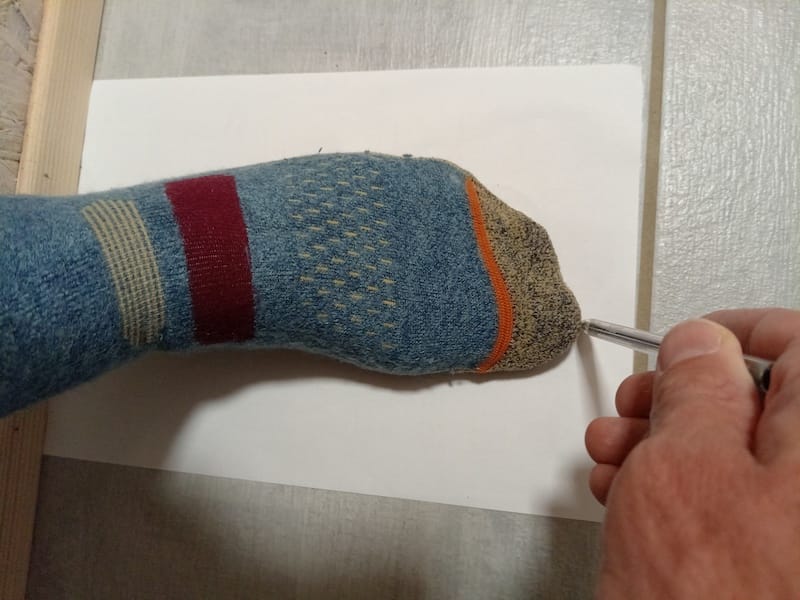
- Place a sheet of paper on the floor against a wall.
- Step onto the piece of paper with your heel touching the wall.
- Using a pencil, mark the end of your longest toe on the paper.
- Remove your foot and measure the length on the paper to determine your foot length in centimeters.
- Repeat the same process with your other foot and go with the longer measurement.
How to measure foot width for snowboard boots
Follow these simple steps to measure your foot width for snowboard boots:
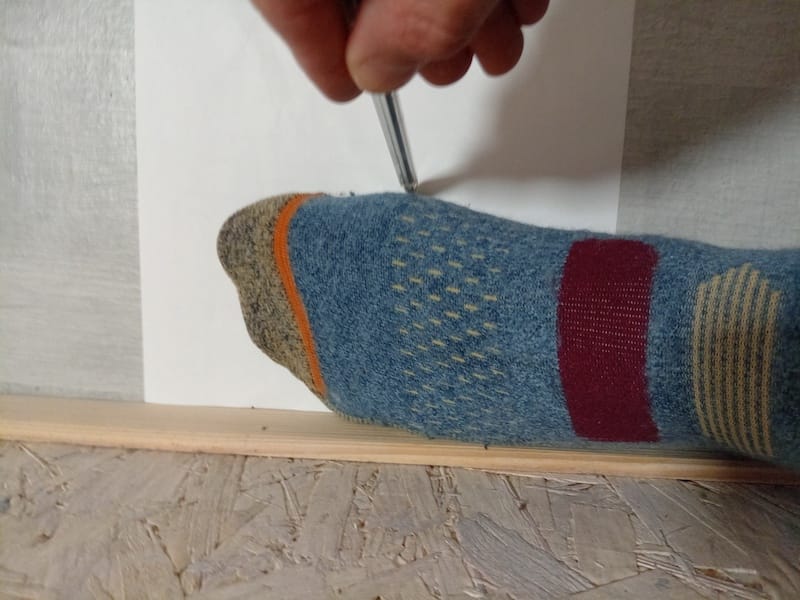
- Place a sheet of paper on the floor against a wall.
- Step onto the piece of paper with the outside of your foot touching the wall.
- Using a pencil, mark the widest part of your foot on the paper, usually the first knuckle of your big toe.
- Remove your foot and measure the width on the paper to determine your foot width in centimeters.
- Repeat the same process with your other foot and go with the longer measurement.
How Snowboard Boots Should Fit
Snowboard boots should fit a little differently out-of-the-box than how shoes normally fit.
Keep the following things in mind when trying on snowboard boots:
- Wear snowboard socks to give an accurate fit and feel.
- Boots should fit snugly, but there should be no pain or pressure points.
- Heels should stay in place when flexing, especially when pushing the shins into the tongues of the boots.
- Toes should lightly touch the front of the boots when sitting or standing, and then pull back slightly when knees are flexed; your toes should not be curled up.
Bear in mind that snowboard boots will “pack out” within the first few days of riding, meaning they will become a bit roomier within days.
Many boots offer heat-moldable liners, which can be fine-tuned either in-store or at-home. This is a way of speeding up the packing out period to ensure a perfect fit sooner.
Common Boot Sizing Problems and How to Fix Them
You might not have the opportunity of trying on your boots in a snowboard shop before you buy them, and you may encounter some of the following common issues.
Problem 1 – Heel lift
This is a common issue that can reduce the responsiveness of your boots when shifting onto your toe edge, because energy is wasted through your heel lifting inside your boot.
The Fix – Place J-bars in the boot shell to give extra hold around your heel.
Problem 2 – Too tight
This feeling indicates that either your boots are too small or the socks you’re wearing are too thick.
The Fix – Put on lightweights socks and try your boots again. If they still feel small, it might be time to size up.
Problem 3 – Too loose
This feeling indicates that either your boots are too big or the liners have packed out too far.
The Fix – Try to place padding between the shell and the liners to see if you can make the fit feel more snug. It’s also possible to get thicker insoles and see if they help remove some of the extra room. If neither of these fixes work, it might be time to downsize.
Problem 4 – Volume
This is the feeling that your feet are “swimming” inside the boot; that they have too much room. This can be a result of simply not wearing boots from a brand that corresponds to your foot shape, despite being the correct length.
The Fix – Similarly to the fix described above, insoles can play a role in taking up excess room inside a boot. Alternatively, if a foot has a lot of room to “swim” from side-to-side, it might be worth looking at narrower-fitting brands.
Some of these issues may even come up as your once well-fitting boots go through more and more days on the mountain or your body changes over time.
Sizing Differences Between Snowboard Boot Brands
When shopping for snowboard boots, the challenging reality is that not all brands fit the same even if the size is identical.
The safest way to determine size is by using the Mondo Sizing System described earlier.
Beyond foot length, snowboard boots vary in other dimensions as well, including narrower or roomier toe-boxes or heel hold, and overall insole volume.
The best thing you can do is try boots on in a shop and determine what fits the best yourself. Brands often have models which cater to wider or narrower feet, while most are adjustable either through the addition of J-bars or thicker insoles.
Generally speaking brands that offer more wider-fit options with roomier toe-boxes include: Burton, K2, Vans, Thirty-Two and Rome.
Brands that cater more towards narrower fit include: Salomon and Ride.
If you can’t make it to a shop and have to buy your boots online, try to ensure that there is a good return policy. When you get your boots, run through the steps outlined in How Snowboard Boots Should Fit and don’t hesitate to send them back to the retailer if they cause any pain or don’t fit right.
Snowboard Boot Sizing Tips for Different Riders
As snowboarders increase their skill level, they need equipment to respond to that progression. Increased skill often means increased speeds and increased pressure placed on boots.
Depending on where you’re at in your skill progression, the following tips can help you when choosing your next pair of boots.
- Beginners – Prioritize comfort and warmth over performance. This means, you can choose boots with a soft to medium flex at a lower price point.
- Park Riders – Benefit from slightly roomier fit and softer flex when riding rails and boxes. Jumping, which is largely related to carving, can benefit from slightly stiffer boots. Medium flex with a roomy fit is a good compromise for many park riders.
- Carvers & Freeriders – Prefer to have stiffer boots which respond more quickly to fine movements. Tight fit increases the efficiency of energy transfer between muscle movements and board response.
If you’ve found the perfect boots that fit in every way except for the arch support, consider purchasing aftermarket insoles.
Frequently Asked Questions
Final Thoughts
Snowboard boot sizing has a direct impact on your performance and your enjoyment of snowboarding. It is therefore vital to make sure you’re wearing a properly fitting pair of boots.
Ill-fitting boots can lead to discomfort, pain, and even injury in the long run. Comfort and support are key at earlier skill levels, and responsiveness to movement becomes more important as skills progress.
It’s important to try boots from different brands, as they all have their own specificities and all fit a little differently. If you can, try to test out boots in a brick-and-mortar snowboard shop as many shops have boot fitters on staff to help you find the perfect fit.
To learn more about snowboard boots, check out our dedicated article on Snowboard Boot Lacing Systems.

